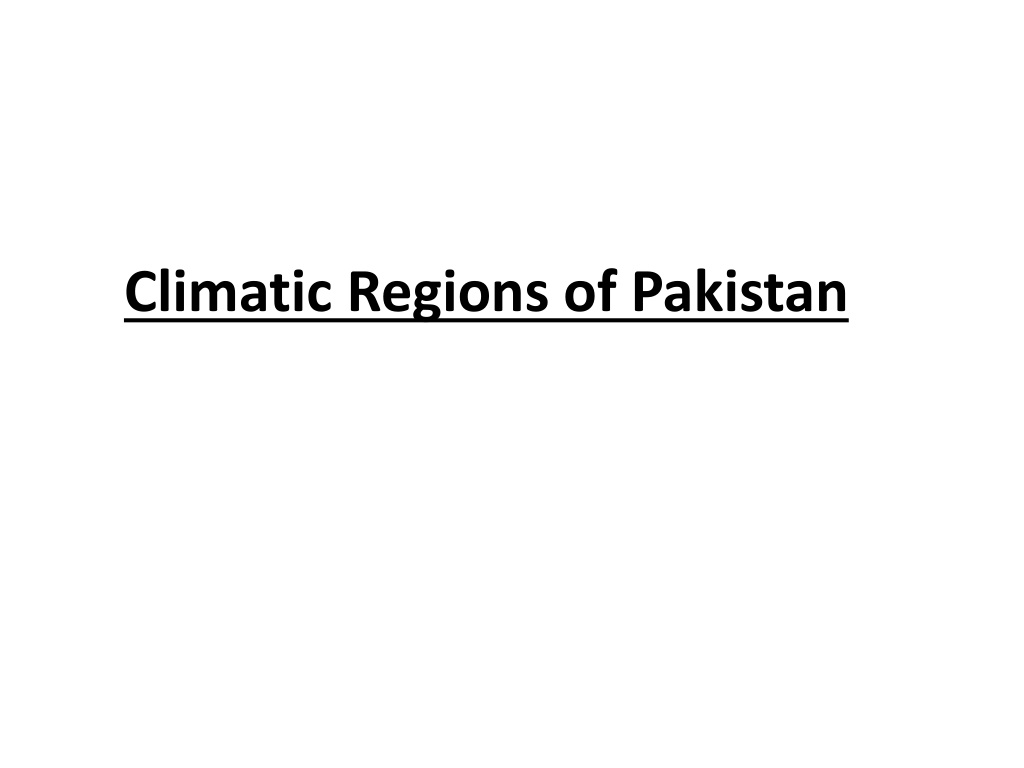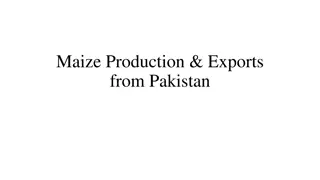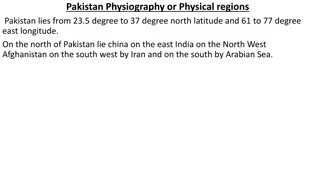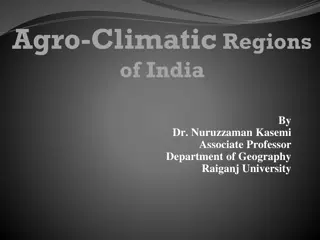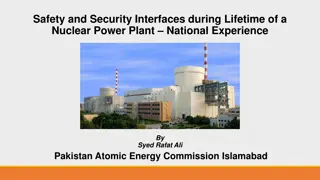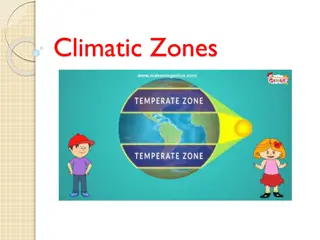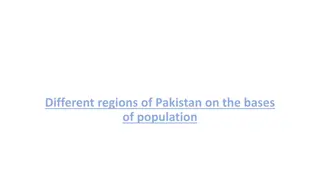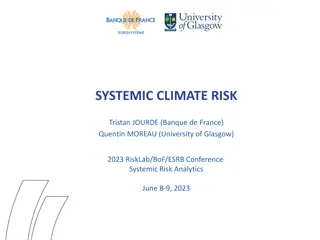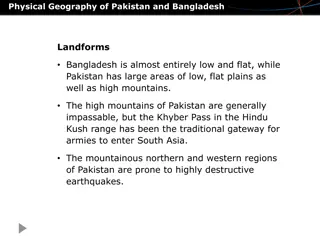Climate and Climatic Regions of Pakistan
Pakistan exhibits diverse climatic regions ranging from sub-tropical continental mountains to arid desert plateaus. Factors like altitude, latitude, and distance from the sea greatly influence the country's climate. The country experiences weather conditions such as temperature variations, rainfall patterns, humidity levels, air pressure, and wind movements. The sources of rainfall in Pakistan mainly include monsoons and western depressions. Understanding these climatic regions is vital for planning and adapting to the environmental conditions in different parts of the country.
Download Presentation

Please find below an Image/Link to download the presentation.
The content on the website is provided AS IS for your information and personal use only. It may not be sold, licensed, or shared on other websites without obtaining consent from the author.If you encounter any issues during the download, it is possible that the publisher has removed the file from their server.
You are allowed to download the files provided on this website for personal or commercial use, subject to the condition that they are used lawfully. All files are the property of their respective owners.
The content on the website is provided AS IS for your information and personal use only. It may not be sold, licensed, or shared on other websites without obtaining consent from the author.
E N D
Presentation Transcript
Climate of Pakistan The atmospheric condition for a short period of time is called weather. The average atmospheric condition for a long period of time usually 30 year is called climate. Weather is the daily or day to day atmospheric condition it is changing hour to hour or day to day while climate is the average and takes hundreds, thousands, even millions of years to change.
Elements of weather condition 1 2 3 4 5 Temperature Rain fall Humidity. Pressure Wind
Factors that affect the climate of Pakistan Altitude Latitude location. The sub-Tropical location of Pakistan that tends to keep the temperature high, particularly in summer. 3 Surface of the earth 5 Wind 6 Distance from the sea 1 2
World Climate Dr. R. B. Schultz
Sources of rain fall in Pakistan Monsoon Western depression 1 2
Climatic Regions Of Pakistan. Pakistan can be divided into the following climatic regions: 1.Sub-Tropical Continental This region includes the mountains in the North and West of the Indus plain. In this region winters are cold and lengthy and often the temperatures goes below the freezing point and the higher peaks remain snow -covered throughout the year. But here summer remains short cool. The Western mountainous areas are less fertile and have barren rocks without any natural vegetation, and receive less rain fall then the northern and eastern mountain and receive more rain fall in winter then summer. Highland Type
2.Sub-Tropical Continental Plateau Type This region includes the north western part of Baluchistan Province and Potwar region. Here winters are cold ,and in summer temperature goes higher enough and often dust storms prevail .Although it has higher altitude ,but due to poor rainfall these have turned into arid desert . In these areas there is lack of rain water and it is less than 10 inches or 25 cm annually ,but some of the places of these areas have the lowest rainfall e.g. Nokundi has only 1.95 inches or 5 cm of rainfall annually and rain often comes during the months of January and February
3.Sub-Tropical Continental Low Lands This region includes the interior areas of Punjab and Sindh provinces and Peshawar valley. It has generally arid and extreme climate. Here summer remains long and hot but winters are cool and short. It has the hottest places of the country such as Jacobabad and Sibbi. The rainy season begins in the middle of the summer months.The places which are situated near pledmont areas have enough rainfall e.g. Sialkot has about 30 inches or 88.3 cm. of annual rainfall. But the western part of this plain is drier than the eastern due to very poor rainfall e.g. Thal and Cholistan desert in Punjab and Tharparker desert in Sindh are included in this region.
4.Sub-Tropical Coastal Areas Type This region includes the coastal area around Karachi and Makran. Here due to the influence of the sea the temperature remains moderate the rainfall is about 7 inches or 18 cm annually .
